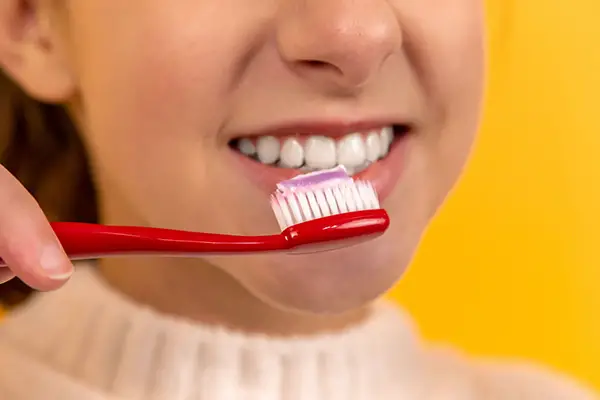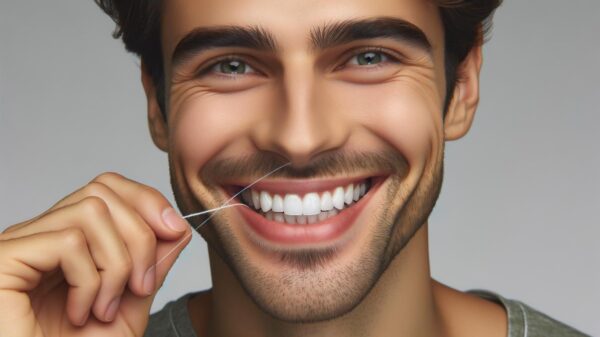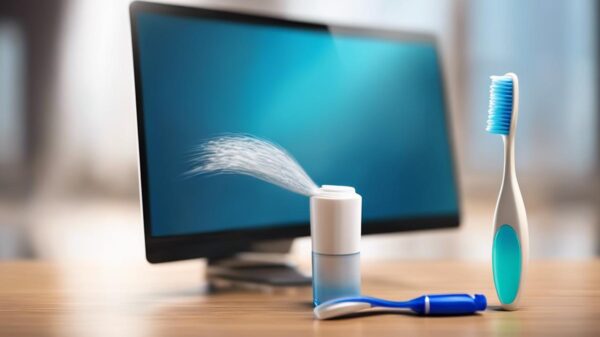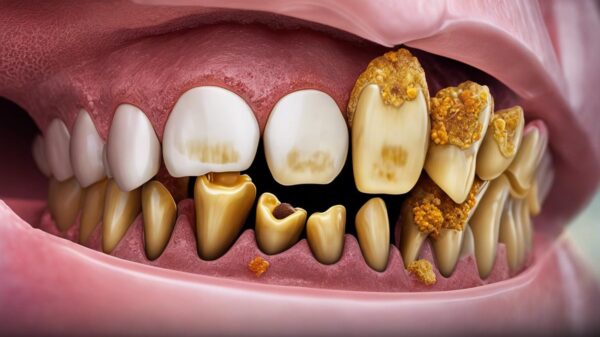Are You Cleaning Your Teeth Properly?
Brushing your teeth is a skill you are taught early in childhood. Most kids are excited to learn how to brush their teeth and have their special toothbrushes and toothpaste. But, as we get older, some people forget or are too busy. Not brushing your teeth regularly can lead to halitosis (bad breath) and dental issues.
So, what are some of the most common mistakes people make cleaning between teeth? Some of the most common mistakes people make cleaning between their teeth include using the wrong type of floss, using too much pressure when flossing, and not flossing often enough. Other mistakes include not keeping bi-annual dental cleaning appointments.
There are simple tricks and tips to follow to ensure you stay on schedule and have beautiful and clean teeth!
Important Parts To Teeth Cleaning
It’s important to clean your teeth properly so that you can maintain healthy teeth and gums. A healthy smile has a grand impact on your daily life. Your smile is one of the first things a person notices and remembers. Also, dental hygiene has a direct correlation to cardiovascular health.
Less plaque on your teeth decreases the risk of plaque traveling from your mouth and into other parts of your body such as your heart. Some people do not a routine for how they clean their teeth, but the following tips can help build a better habit.
Tips for Proper Tooth Cleaning
- Use a toothbrush and toothpaste to clean your teeth twice a day – once in the morning and once at night.
- Make sure to brush all of your teeth, including the back ones.
- Brush for two minutes each time.
- Use circular motions when brushing your teeth.
- Spit out the toothpaste after brushing.
- Floss your teeth once a day using flossing threaders or floss picks.
- Rinse your mouth with water after flossing.
- See a dentist for teeth cleaning every six months.
- Use a tongue scraper to clean your tongue once a day.
- Use a mouthwash to rinse your teeth and gums after brushing and flossing.
Mistakes When Teeth Cleaning
Did you know that people are making some pretty common mistakes when it comes to teeth cleaning? Maybe they never knew, or maybe they didn’t have the time. Simple changes can be made to greatly improve your teeth. Read the following and see if you are making any mistakes when it comes to cleaning your teeth!
Not Brushing All of Their Teeth
Many people forget to brush their back teeth. This can lead to plaque build-up and cavities. Be especially careful when brushing the inside surfaces of teeth near the gum line.
These teeth are easy to miss and maybe missed even by well-meaning dental professionals if they don’t look carefully. When you can’t see them, take an extra few seconds and use short little strokes with light pressure along the top edge of teeth that face up toward gums.
Brushing Too Hard
This can wear down the enamel on your teeth and cause pain and sensitivity. Try using a soft-bristled brush and not using as much pressure as you brush.
Not Brushing Long Enough
Two minutes is the recommended amount of time to spend brushing your teeth. Consider purchasing a toothbrush with a timer built-in! You will always know once it has been two minutes every time.
Not Using the Right Techniques
Make sure to brush your teeth in a circular motion and use enough toothpaste. Follow the directions on the toothpaste tube. Be sure to brush teeth back and forth, rather than up and down, if you want to clean teeth effectively with an electric or manual toothbrush.
When using a manual toothbrush, be sure to place it at a 45-degree angle so that you can get deep between teeth where plaque hangs on tightly even after mouthwash has been used.
Rinsing With Water After Brushing
This can wash away the fluoride from toothpaste and make it less effective. This is one of the most common mistakes people make. You only need to rinse after using mouthwash.
Not Using a Tongue Scraper
This can cause bacteria and plaque to build upon your tongue. If you do not have a tongue scraper, use the bristles of the backside of your toothbrush.
Not Using Mouthwash
Mouthwash can help to kill bacteria and remove plaque from teeth and gums. This is a crucial step in your teeth cleaning route. This helps to make sure you remove as much bacteria and plaque as possible.
It’s important to clean your teeth properly every day so that you can maintain good oral hygiene. See your dentist for teeth cleaning every six months, and make sure to use a toothbrush, toothpaste, floss, tongue scraper, and mouthwash to keep your teeth clean and healthy.
Tips For Effective Teeth Cleaning
There are small actions that can be taken that over time will improve your dental hygiene. The following along with speaking with your dentist can have a positive influence on how you clean your teeth each day:
- Floss your teeth at least once a day. More often if you have braces, bridges, or implants. Flossing helps remove plaque and food particles from teeth and gums that toothbrushes can’t reach. It’s also a good way to check for signs of gum disease, which can lead to tooth loss if it’s not treated.
- Replace your toothbrush every three months, or sooner, if the bristles start to wear down and become ineffective at removing plaque.
- See your dentist for teeth cleaning every six months. More often if you have gum disease, braces, implants, or other dental work. A scheduled teeth cleaning from your dentist is the best way to remove plaque and tartar that have built up on teeth over time.
Scheduling Teeth Cleanings
Most of the time, teeth cleanings with your dentist are scheduled in advance. But, there are times when the frequency may need to be changed.
Teeth cleaning frequency varies depending on one’s oral hygiene habits. Those who brush their teeth regularly and floss at least once a day may only need teeth cleanings every twelve months. However, for those who do not brush and floss as often teeth cleaning every six months may be necessary.
Your dentist will be able to give you a better estimate of how often teeth cleanings are necessary based on your oral hygiene habits, teeth health, and overall health.
![]()
Dental Appointments for Children
Kids should see their dentist for teeth cleanings as soon as they get their first teeth or no later than one year of age. This helps limit the risk of cavities forming as teeth grow in and protects teeth from damage due to too much fluoride consumption.
What To Expect During A Teeth Cleaning
Now that you know when to schedule a cleaning, it is time to discuss what happens during this process.
A teeth cleaning with your dentist is a fairly simple process. You will be seated in a dental chair and the dentist will use various tools to clean teeth and gums.
Check for Signs of Disease or Damage
The dentist will start by inspecting teeth and gums for any signs of disease or damage. They will then use a tool called a scaler to remove plaque and tartar from teeth. This is a manual tool that looks like a metal pick. The dentist may also use an ultrasonic scaler, which uses sound waves to break up plaque and tartar.
Polish Your Teeth
When teeth are free of plaque and tartar, the dentist will then polish teeth to remove any remaining stains or marks. This polishing can be done with a machine that sprays on toothpaste and polishes teeth at the same time or by hand using a special tool or foam.
After teeth have been polished, your teeth will be cleaned with water, dental floss, and an oral irrigator. Your gums may also get a gentle massage during this step to improve circulation of blood flow in them.
How Long Does a Tooth Cleaning Take?
The process takes around thirty minutes to complete for one tooth cleaning session and multiple sessions may be needed depending on how bad teeth are stained.
After cleaning, you may wonder how you can best maintain your teeth at home. A key factor is the type of toothpaste you use. Take some time to ask your dentist for their recommendations and compare it to yours at home. It might be time to use a new toothpaste, but it is important to know what ingredients are effective and safe.
Do You Know What Kind Of Toothpaste To Use?
When it comes to toothpaste, there are a variety of ingredients that can be found in it. Each brand offers different benefits and ingredients. This is why it is crucial to understand what your toothpaste is made of. While all teeth cleaning ingredients are not necessary, some may help remove plaque and bacteria better than others.
Abrasives
Toothpaste often contains abrasives. These are materials that help scrub teeth and remove plaque and tartar. Abrasives can be either natural or synthetic.
Examples of natural abrasives include ground nutshell, baking soda, and calcium carbonate. Examples of synthetic abrasives include aluminum oxide and silica.
Humectants
Humectants are ingredients that help keep toothpaste from drying out. They also help the paste stick to teeth so that it can remove plaque and bacteria. Polyethylene glycol, sorbitol, glycerin, and propylene glycol are common humectants found in teeth cleaning products.
Fluoride
Fluoride helps prevent tooth decay by strengthening teeth from the outside against acid from acids from plaque. Fluoride can be natural or artificial. Natural fluoride comes from calcium fluoride while synthetic fluoride is created from hydrogen fluoride.
Tartar Control Agents
These ingredients help reduce how much tartar forms on teeth when used regularly over time after brushing teeth properly. Tartar control agents come in two types: calcium phosphate and tetra calcium phosphate.
A good way to begin choosing teeth cleaning product is to narrow down what purpose it needs to serve for teeth. If having whiter teeth is what you seek, consider looking for a product that has peroxide or another ingredient like baking soda to help bleach teeth further if your teeth are not already heavily stained. Keep in mind that bleached teeth aren’t actually white but just lighter than they were before being bleached.
Making Better Habits
Brushing your teeth and having regular teeth cleanings are crucial steps to maintaining dental hygiene. Take a look at your routine and see if it can’t be improved with some of the tips above. I make sure to follow my routine every day so that I can keep my smile beautiful!














